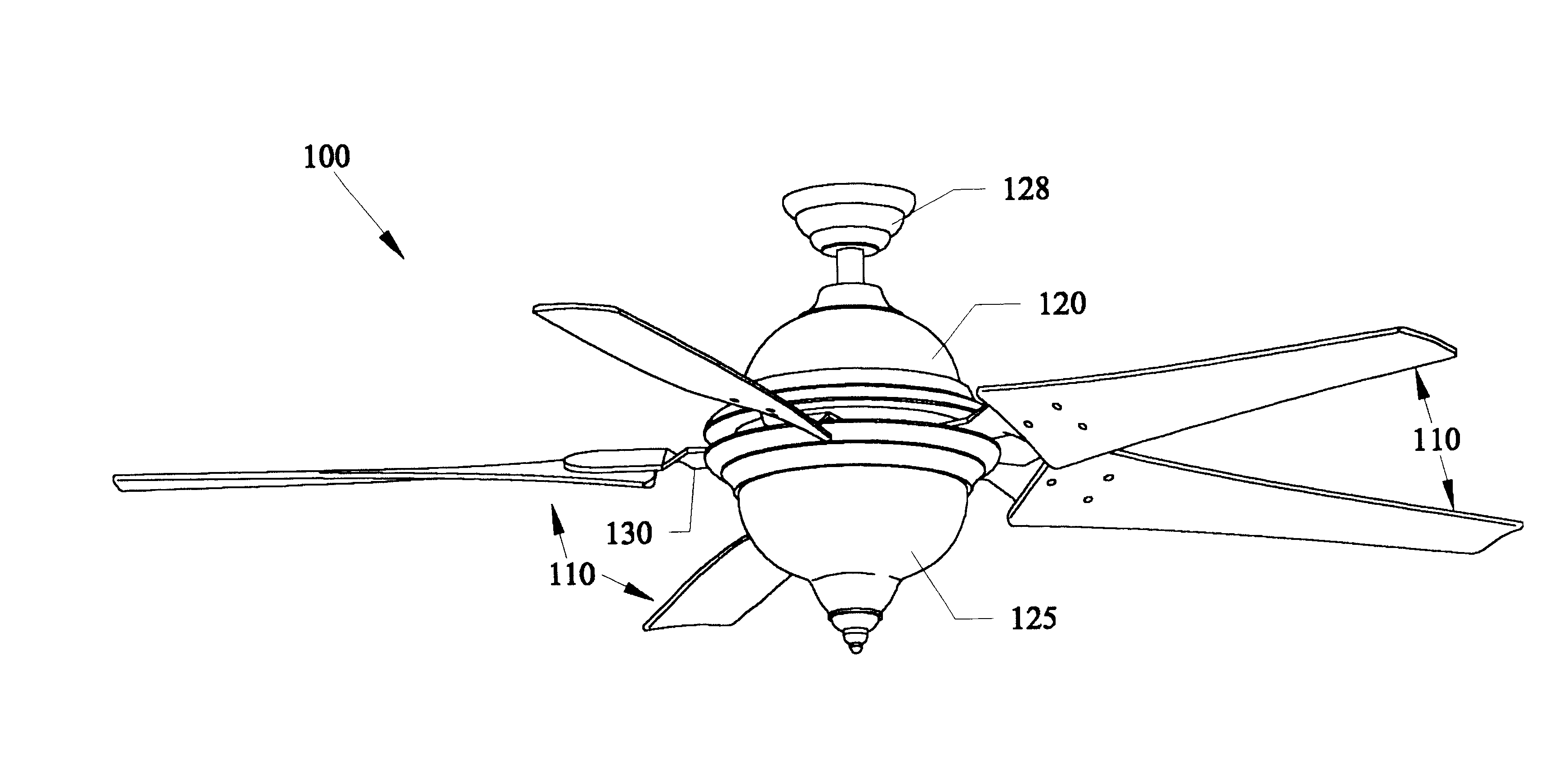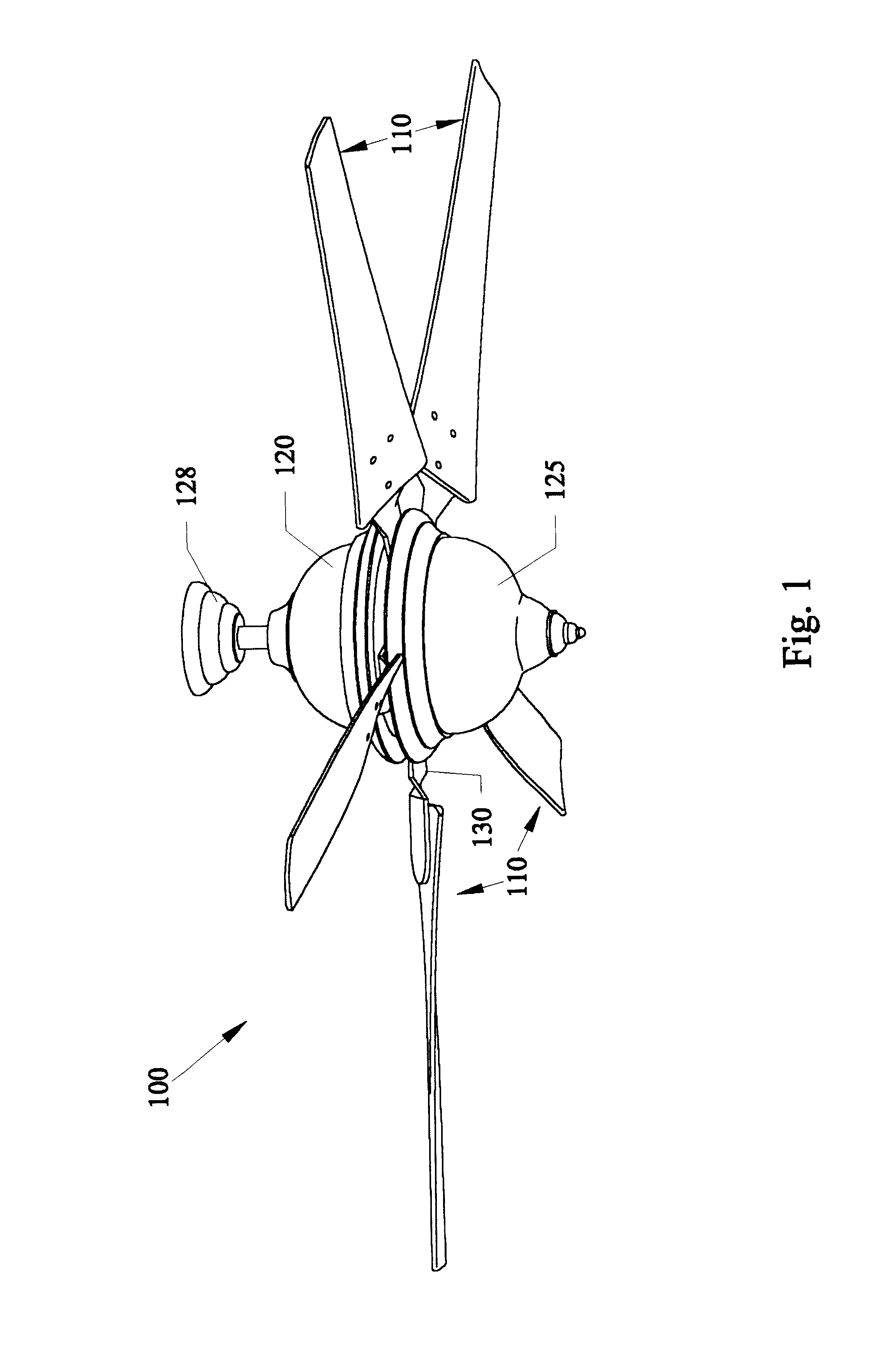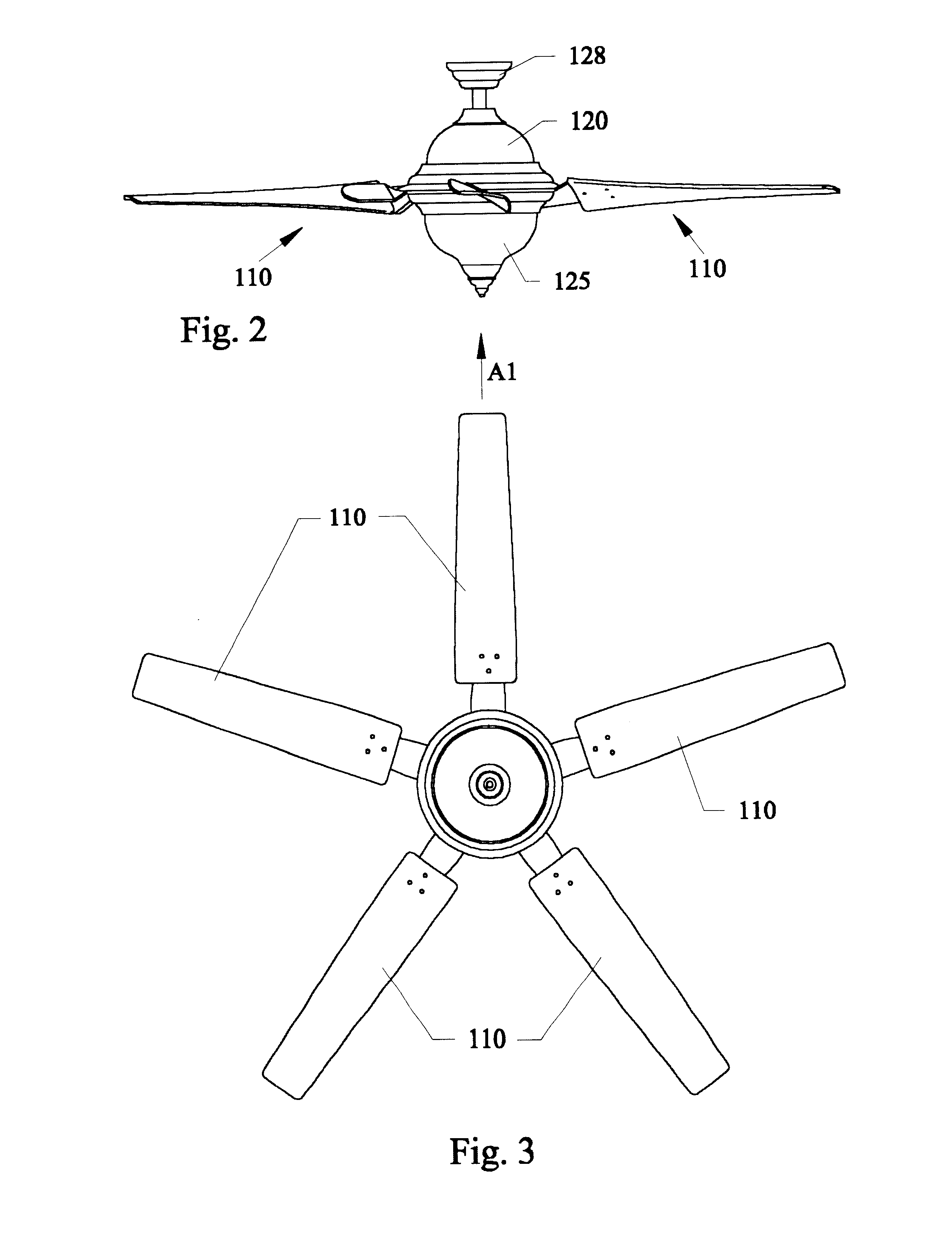High efficiency ceiling fan blades
a ceiling fan and high-efficiency technology, applied in lighting and heating apparatus, ventilation systems, heating types, etc., can solve the problems of flat ceiling fan blades, excessive noise that is noticeable to persons, and none of these propellers are designed for optimum airflow
- Summary
- Abstract
- Description
- Claims
- Application Information
AI Technical Summary
Problems solved by technology
Method used
Image
Examples
second embodiment
Subject invention second embodiment had an overall wing span of approximately 52", and used fan blades each being made of injection molded plastic.
Table 1 shows running the second embodiment of the subject invention at low speed operations, with the Power Drawer is the instantaneous electric power requirement in Watts. The parameters include power(in watts) and speed(revolutions per minute(rpm)).
Table 2 shows running the second embodiment of the subject invention at medium speed operations, with the Power Drawer is the instantaneous electric power requirement in Watts.
Table 3 shows running the second embodiment of the subject invention at high speed operations, with the Power Drawer is the instantaneous electric power requirement in Watts.
third embodiment
FIG. 15A is a perspective view of a single fan blade 310 of a third embodiment 300 of invention showing the single fan blade 310 having an overall length D3 between tip end 300TE and root end 300RE being approximately 23.5 inches, and various reference cross-sections(300RS(4), 300RE) being approximately 4.70 inches from one another along air foil center line 300ACL, and blade 310 having leading edge 300LE and trailing edge 300TEDGE oriented along the blade rotational plane RP. FIG. 15B is an end view of the single fan blade 310 of FIG. 15A representing degrees of twist between from the root end 300RE to the tip end 300TE, when the blade is positioned in a selected position on a ceiling fan motor assembly like those shown in the previous embodiments. The tip end 300TE has an angle of approximately 4.71 degrees from a horizontal plane that is parallel to the ceiling. In other words, the angle would be approximately 4.71 degrees from a motor axis(MA). The root end 200RE would have an a...
PUM
 Login to View More
Login to View More Abstract
Description
Claims
Application Information
 Login to View More
Login to View More - R&D
- Intellectual Property
- Life Sciences
- Materials
- Tech Scout
- Unparalleled Data Quality
- Higher Quality Content
- 60% Fewer Hallucinations
Browse by: Latest US Patents, China's latest patents, Technical Efficacy Thesaurus, Application Domain, Technology Topic, Popular Technical Reports.
© 2025 PatSnap. All rights reserved.Legal|Privacy policy|Modern Slavery Act Transparency Statement|Sitemap|About US| Contact US: help@patsnap.com



